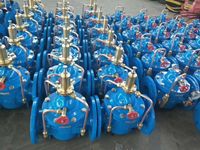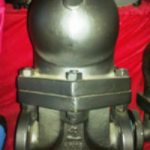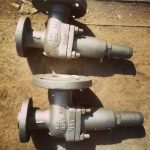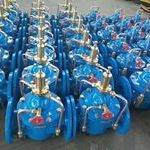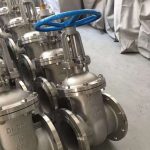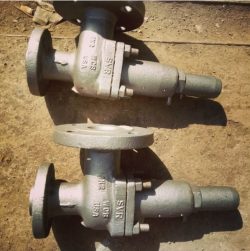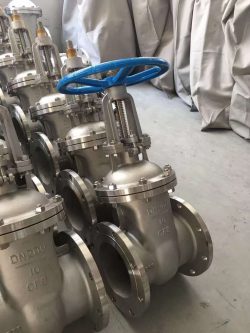pressure relief valve manufacturers in Germany
Pressure Relief Valve Manufacturers in Germany
Valvesonly Europe are premium Pressure Relief Valve Manufacturers in Germany. A pressure relief valve is a safety device designed to protect pressurized systems and equipment from excessive pressure. When the pressure within a system exceeds a preset level, the Pressure Relief Valve automatically opens to release the excess pressure, preventing potential damage or catastrophic failure. These valves are critical components in various applications, including boilers, pressure vessels, pipelines, and other pressurized systems, ensuring safe operation by maintaining pressure within acceptable limits.
How Pressure Relief Valve works:
The working of a pressure relief valve involves a spring-loaded mechanism or a pilot-operated system. In a spring-loaded PRV, the valve remains closed under normal operating conditions, with the spring tension set to a specific pressure threshold. When the system pressure exceeds this threshold, the force exerted by the pressure overcomes the spring tension, causing the valve to open and release the excess pressure. Once the pressure drops back to a safe level, the spring force re-closes the valve, restoring the system to normal operation. In pilot-operated Pressure Relief Valves, a pilot valve controls the main valve, offering more precise control and suitability for higher-pressure applications. This mechanism ensures that the system is protected from overpressure conditions, maintaining safety and preventing damage.
How to adjust Pressure Relief Valve?
Adjusting a pressure relief valve involves changing the setpoint at which the valve opens to release excess pressure. Here are the steps to adjust a typical pressure relief valve:
· Ensure the system is not under pressure. Depressurize the system if necessary to avoid accidents. Use appropriate personal protective equipment (PPE), such as gloves and safety goggles.
· Find the adjustment screw or bolt on the valve. This is usually covered by a cap that protects it from accidental adjustments.
· If there is a protective cap covering the adjustment screw, remove it carefully.
· Connect a pressure gauge to monitor the system pressure accurately. This helps in setting the valve to the desired pressure.
· Turn the adjustment screw clockwise to increase the spring tension, which raises the pressure setpoint.
· Turn the adjustment screw counterclockwise to decrease the spring tension, which lowers the pressure setpoint.
· Make small incremental adjustments and monitor the pressure gauge closely to avoid over-adjustment.
· Gradually pressurize the system and monitor when the valve opens. Ensure it opens at the desired setpoint pressure.
· Adjust further if necessary, repeating the process of depressurizing and adjusting until the correct setpoint is achieved.
· Once the desired setpoint is correctly adjusted, replace the protective cap over the adjustment screw.
· Record the new setpoint and any other relevant details in the system’s maintenance log for future reference.
· Always refer to the manufacturer’s instructions for specific details related to your valve model, as there may be variations in the adjustment process.
· Ensure you use the correct tools to avoid damaging the adjustment screw or other components of the valve.
· After adjustment and testing, inspect the valve and surrounding connections for any signs of leakage.
· Over-tightening the adjustment screw can damage the spring or other internal components.
· Adjustments should ideally be performed by qualified personnel who are familiar with the equipment and safety procedures.
· Proper adjustment of a pressure relief valve is crucial for maintaining system safety and efficiency. Regular maintenance and periodic checks are recommended to ensure the valve remains set at the correct pressure.
Key Features of Pressure Relief Valves:
· They are designed to open at a predetermined pressure setpoint to prevent system overpressure. The setpoint is adjustable in many models to accommodate different system requirements.
· Most valves use a spring-loaded mechanism to control the valve opening and closing. The spring tension determines the pressure setpoint.
· Some pressure relief valves include a manual override feature that allows the valve to be operated manually for testing or emergency purposes.
· They are constructed from various materials (e.g., stainless steel, brass, bronze) to withstand different media and operating environments, including corrosive or high-temperature conditions.
· They can either fully open immediately upon reaching the set pressure (full lift) or open gradually as the pressure increases (modulating), depending on the application requirements.
· These valves are available in various sizes and flow capacities to match the specific needs of different systems, ensuring adequate pressure relief.
· They feature high-quality seals and seats to ensure a tight seal when closed, preventing leaks and ensuring reliable operation.
· They are certified to meet industry standards and regulations (such as ASME, API, or ISO) for safety and performance, ensuring they are suitable for use in critical applications.
· These valves are manufactured to operate effectively within a specified temperature range, accommodating various industrial processes.
· They are designed for easy disassembly and maintenance, with features such as removable caps and accessible internals, allowing for straightforward inspection, cleaning, and repair.
· They are capable of handling backpressure conditions without compromising performance, ensuring reliable operation in complex systems.
· They can be installed in various orientations (vertical or horizontal) and connection types (threaded, flanged, welded) to fit different system designs.
As Pressure Relief Valve Manufacturers in Germany, we supply to these industries:
· Oil and Gas
· Chemical Processing
· Power Generation
· Water Treatment
· Pulp and Paper
· Marine and Shipbuilding
· Petrochemicals
· Manufacturing and Industrial Processing
· Aerospace
· Automotive
· Nuclear Power
· Mining and Minerals Processing
Description:
· Available materials: Ductile Iron, WCB, WCC, WC6, LCB, LCC, SS304, SS316, Cast iron
· Size: 1/2″ to 24″.
· Nominal Pressure: PN10 to PN100.
· Class: 150 to 600.
· Ends: Threaded, Buttweld, Socket weld, Flanged
Visit our website to know more about our valves:
